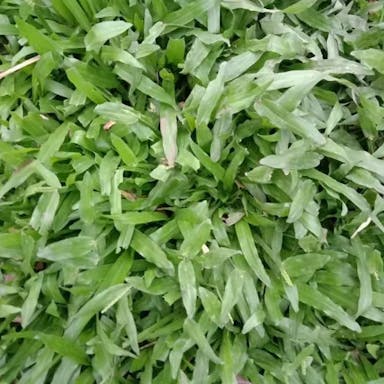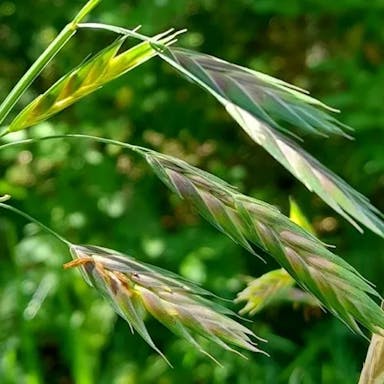Canada bluejoint, scientifically known as Calamagrostis canadensis, is a perennial grass native to North America. Slender, blue-green leaves that turn golden in the fall. Its flowers are feathery and purplish. This grass is commonly used for erosion control and in naturalistic garden designs. It typically grows in moist meadows, marshes, and along stream banks. The plant can reach heights of up to 5 feet. While it does not produce showy fruits, its airy seed heads add visual interest to the plant. It is relatively easy to grow and maintain, thriving in full sun to partial shade.
Canada bluejoint
- Scientific name
- Calamagrostis canadensis
Basic Information
- Poaceae Family Calamagrostis Genus Canada bluejoint Species
- Poaceae > Calamagrostis > Calamagrostis canadensis
- 83%
- The Completeness of This Encyclopedia
Please help us complete the encyclopedia, Terrarium is a encyclopedia service to be completed with everyone in the world. Currently, this page is 83% complete. For more information on how to contribute, please click here.
- Graminoid
- Perennial
- Height
- 60cm ~ 200cm
- Flower Color
- Leaf Color
- Anthesis
- summer
- Sunlight Exposure
Full Sun Long hours of sunlight from morning to afternoon Partial Shade A location in the shade of a tree or where either the morning or afternoon is shaded Full Shade A place where there is no direct sunlight
- Hardiness Zones
This is an indicator to know to which zone each plant can winter. Knowing the zone of each plant gives you an idea of the cold temperature resistance when grown in the ground without a roof. 2: -42.7 to -40.0 3: -39.9 to -34.4 4: -34.3 to -28.9 5: -28.8 to -23.3 6: -23.2 to -17.8 7: -17.7 to -12.2 8: -12.1 to -6.7 9: -6.6 to -1.1 10: -1.0 to 4.4 11: 4.5 to 10.0
- 3
- Cold resistance
- Excellent
- Heat resistance
- Good
- Habitat of origin
- North America
- Growth Rate
- Normal
What is Canada bluejoint (Calamagrostis canadensis)?
What is Canada bluejoint (Calamagrostis canadensis)
Flower meaning
The flower language popularly used elsewhere for Canada bluejoint is as follows: - Canada bluejoint: Appreciation, gratitude, and accord. For instance: Canada bluejoint signifies thankfulness for assistance and regard for nature's splendor. Also it denotes accord in bonds and surroundings.
Calendar of Canada bluejoint (Calamagrostis canadensis)
Calendar
Canada bluejoint is a perennial plant in the Poaceae family. It inhabits wetland areas and is native to various regions in east-central Canada and the northeastern United States. Once a year from June to August, bluejoint displays greenish-white panicles approximately four inches long that gradually fade to a light tan color. The duration of bloom lasts nearly one month. Proper site selection and care allows bluejoint to thrive and prolong flowering. It performs well in full to partial sunlight and consistently moist, acidic soils enriched with organic matter. Avoid hot temperatures and drought stress. Remove spent panicles to encourage reblooming. Plant bluejoint in masses for a showy, naturalized look.
How to grow Canada bluejoint (Calamagrostis canadensis)
Watering
The Canada bluejoint needs moderate watering, about once a week during growing season. Reduce water in dormant season, to every 2-3 weeks. Check soil by inserting finger 2 inches deep. If dry, it's time to water deeply. Enough to reach roots, but avoid standing water. Adjust for temperature and humidity to keep best soil moisture.
Soil and Fertilizer
Canada bluejoint succeeds in damp, free-draining ground with a pH scope of 5.5 to 7.5. It favors abundant soils affluent in organic material. Feed in early springtime with a balanced slow-discharge fertilizer to advance growth. Give fertilizer again in late spring or early summer to back flowering and seed yield. Avoid over-fertilization, as it can guide to extra vegetative development. Observe soil grade often to guarantee best nutrient heights for Canada bluejoint. Modify fertilizer request founded on soil exam outcomes to prevent nutrient shortages or surpluses. On a regular basis monitor soil dampness heights to hold appropriate watering for the bush.
Sunlight and Place
Canada bluejoint needs exposure to 6-8 hours of direct sunlight daily. It tolerates cold temperatures down to -40°C. However this plant benefits from some shade during intense heatwaves. It grows best at temperatures between 18-24°C. In summer, do not allow soil to become completely dry. In winter, provide shelter from strong winds and heavy snowfall. Well-drained soil is preferred. Some afternoon shade is ideal during hot sunny weather. Full sun early and late in the day works well.
Advanced Information of Canada bluejoint (Calamagrostis canadensis)
Pruning
Canada bluejoint benefits pruning. Pruning done late winter early spring before new growth emerges. Cut back the stems about 2-3 inches above the ground. Apply mulch after pruning. Regular pruning helps Canada bluejoint thrive remain vigorous.
Planting and Harvest
Canada bluejoint performs optimal when deposited in porous, draining medium. This averts fluid stagnation. On entombing, opt for receptacle furnished with emptying perforations. Shun rotted roots. Cram holder with amalgam of peat, pumice, and fine minerals. Good progression demands this composition. After burial, saturate thoroughly. Confirm uniform wetness. Transfer to refreshed quarters biennially or triennially. New substrate aids roots. At intervals, besprinkle for ambient moisture, notably indoors. Dryness is detrimental.
Propagation
Canada bluejoint have propagation by division, cuttings, and sow seed. Take division in springtime, do cuttings in summertime, sow mature seed in fall season. Seeds harvest at fully ripen and become dryness. Make division and cuttings utilize sterile equipment for prevent disease spreading. Supply suitable condition for every method for promote success multiply.
Pests and Diseases
Canada bluejoint is prone to varied pests and diseases. These comprise rust fungi, leaf spot, and aphids. Rust fungi source orange or brown spots on the leaves. Leaf spot outcomes in dark lesions. Aphids nourish on the sap, causing wilting and twisting of leaves. To stop these problems, upholding proper air flow near the plant and shunning overhead watering can assist diminish the danger of fungal diseases. Regularly reviewing the plant for indications of pests and diseases and fast treating any infestations can also assist prevent more damage. Withering of Canada bluejoint can take place due to the deprivation of nutrients caused by these pests and diseases, eventually touching the plant's whole health.
Habitat of Canada bluejoint (Calamagrostis canadensis)
Habitat
Toxicity of Canada bluejoint (Calamagrostis canadensis)
Health Benefits
- edible
- Inedible
- Toxic
- No toxicity
NO DATA
Toxic for dogs and cats
NO DATA
Q&A of Canada bluejoint (Calamagrostis canadensis)
- choice
Canada bluejoint is available in two main varieties: 'Avalanche' and 'Karl Foerster.' The Avalanche type has white-colored patterns on leaves, providing unique beauty in gardens. The Karl Foerster variety grows upright with soft, feathery plumes. It is frequently chosen for landscaping projects. When getting new plants, pick seedlings having healthy green leaves and sturdy roots. For seeds, select ones looking full, firm, and free from mold or harm. Make sure seedlings have no disease and were raised in best conditions to grow well in your garden.







